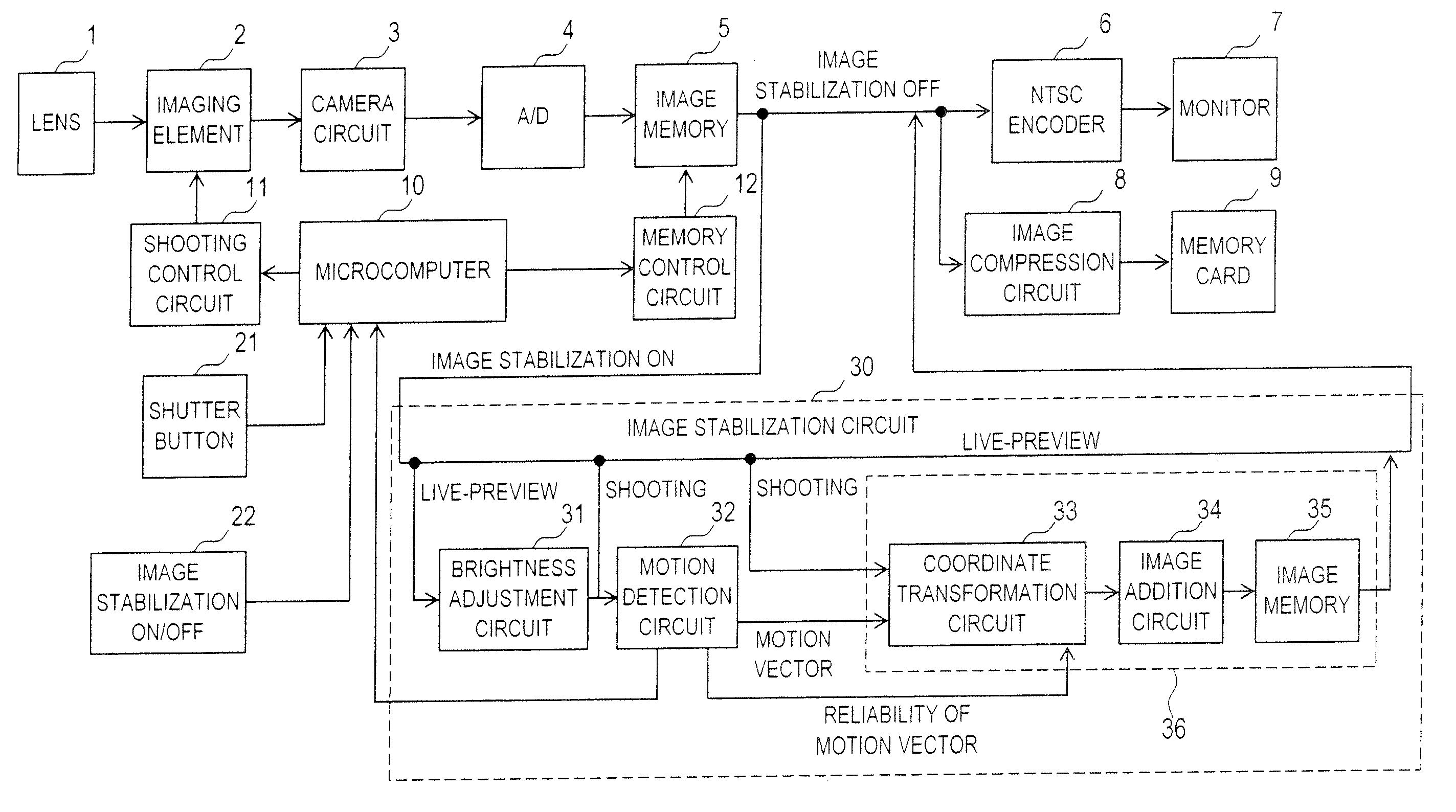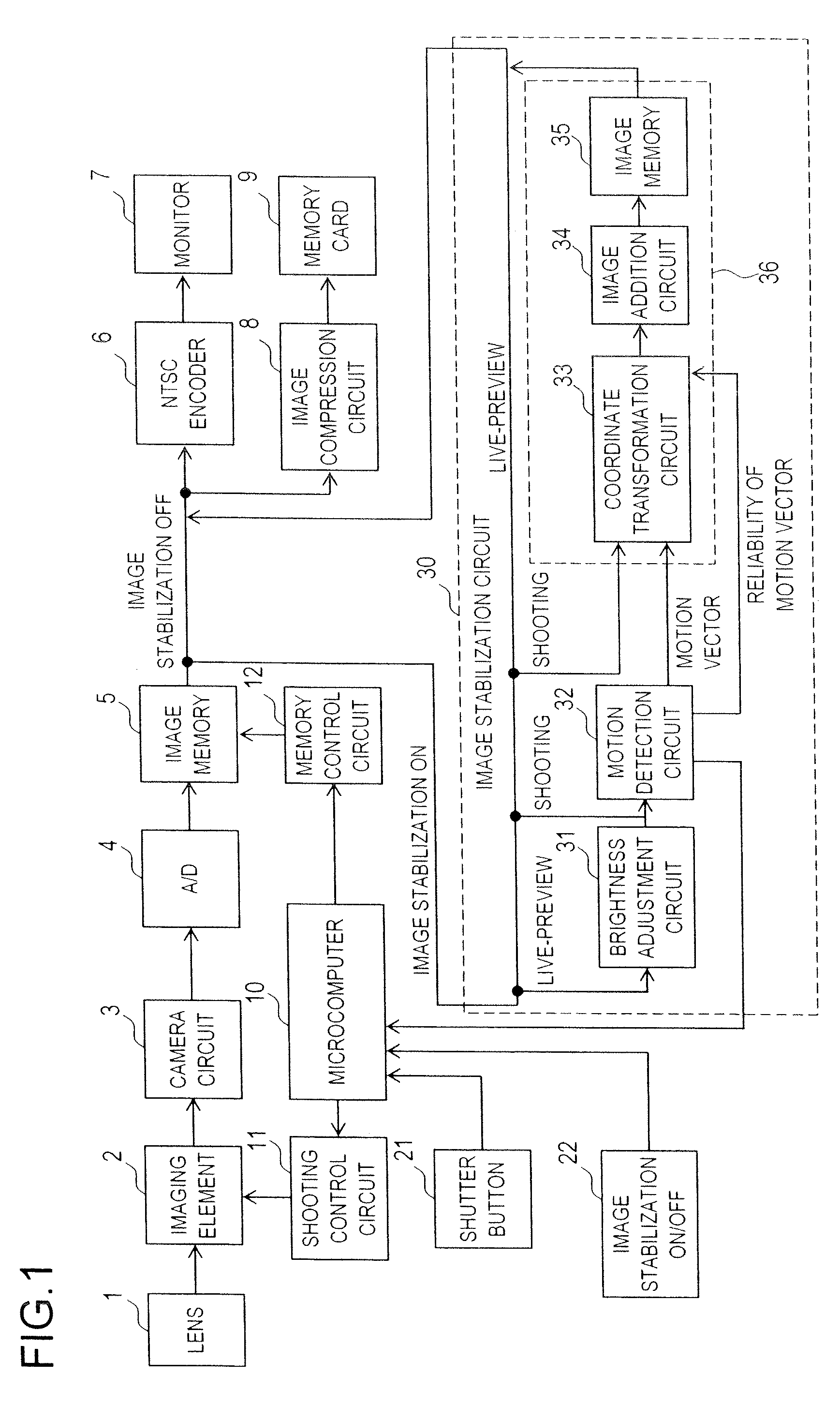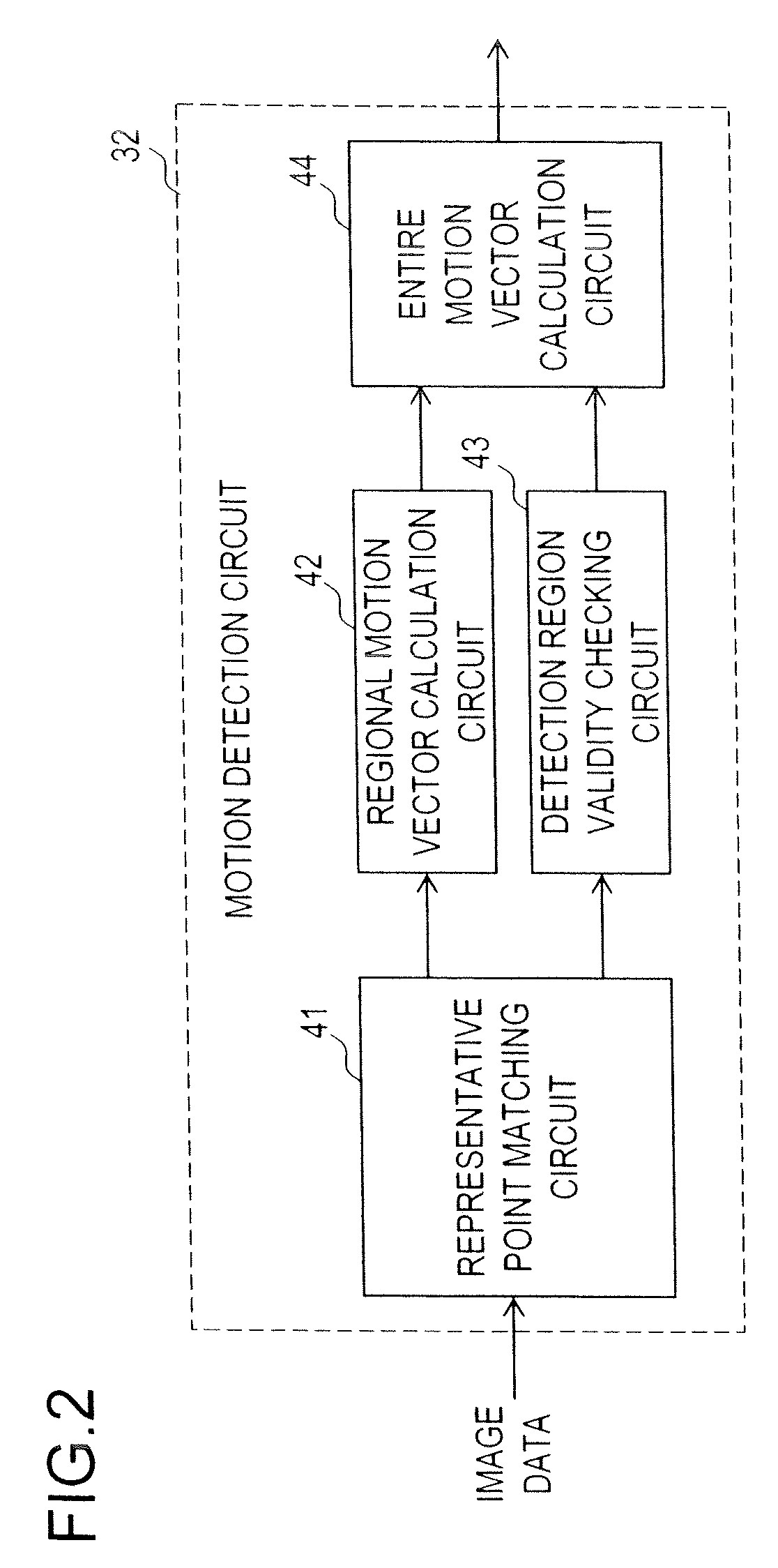Image combining device and imaging apparatus
a technology of which is applied in the field of image combining device and imaging apparatus, can solve the problems of image degradation in the divided exposure image, and the first divided exposure image fixed as a reference image is not always the most suitable reference image,
- Summary
- Abstract
- Description
- Claims
- Application Information
AI Technical Summary
Benefits of technology
Problems solved by technology
Method used
Image
Examples
first embodiment
[0055]Hereinafter, a first embodiment will be described by way of an example in which the present invention is applied to an imaging apparatus. FIG. 1 is a diagram showing the entire configuration of an imaging apparatus according to the first embodiment of the present invention. The imaging apparatus shown in FIG. 1 is, for example, a digital still camera or a digital video camera, and can take at least a still image. The imaging apparatus shown in FIG. 1 is composed of different component blocks represented by reference numerals 1 to 12, 21, 22, and 30. An image stabilization circuit represented by reference numeral 30 includes a brightness adjustment circuit 31, a motion detection circuit 32, a coordinate transformation circuit 33, an image addition circuit 34, and an image memory 35. The coordinate transformation circuit 33, the image addition circuit 34, and the image memory 35 together form an image combining circuit 36. In the following description, what is referred to simply...
second embodiment
[0176]The first embodiment described above deals with a case in which the level of reliability B[i] is calculated with consideration given to all of the four evaluation values (BVmin[i], BVave[i], BNf[i], and BNval[i]). Alternatively, it is also possible to calculate the level of reliability B[i] with consideration given only to one, two, or three of the four evaluation values. In other words, any one, two, or three of the weighting coefficients WVmin, WVave, WNf, and WNval may be set equal to zero (see formula (2) above). In this case, it is possible to omit the calculation of the evaluation value multiplied by a weighting coefficient of zero in formula (2) above.
[0177]A second embodiment deals with an example in which the level of reliability B[i] is calculated by using only the evaluation value BVmin[i] corresponding to the smallest cumulative total correlation value. The second embodiment differs from the first embodiment only in that the level of reliability B[i] is calculated ...
third embodiment
[0180]The first and second embodiments deal with cases in which the first divided exposure image (the first image) of a plurality of divided exposure images obtained when the shutter button 21 is depressed is used as a reference image, based on which the calculation of the entire motion vector M and the positioning of the divided exposure images are performed; however, any of the plurality of divided exposure images may be used as a reference image.
[0181]Furthermore, a divided exposure image used as a reference image may be changed according to the values described above, such as Vmin. A third embodiment deals with a method for changing the reference image. The third embodiment is a partially modified version of the first embodiment, and all the features described in the first embodiment can be applied, unless inconsistent, to the third embodiment. For the sake of concreteness, as is the case with the first embodiment, the third embodiment also deals with a case in which four divide...
PUM
 Login to View More
Login to View More Abstract
Description
Claims
Application Information
 Login to View More
Login to View More - R&D
- Intellectual Property
- Life Sciences
- Materials
- Tech Scout
- Unparalleled Data Quality
- Higher Quality Content
- 60% Fewer Hallucinations
Browse by: Latest US Patents, China's latest patents, Technical Efficacy Thesaurus, Application Domain, Technology Topic, Popular Technical Reports.
© 2025 PatSnap. All rights reserved.Legal|Privacy policy|Modern Slavery Act Transparency Statement|Sitemap|About US| Contact US: help@patsnap.com



